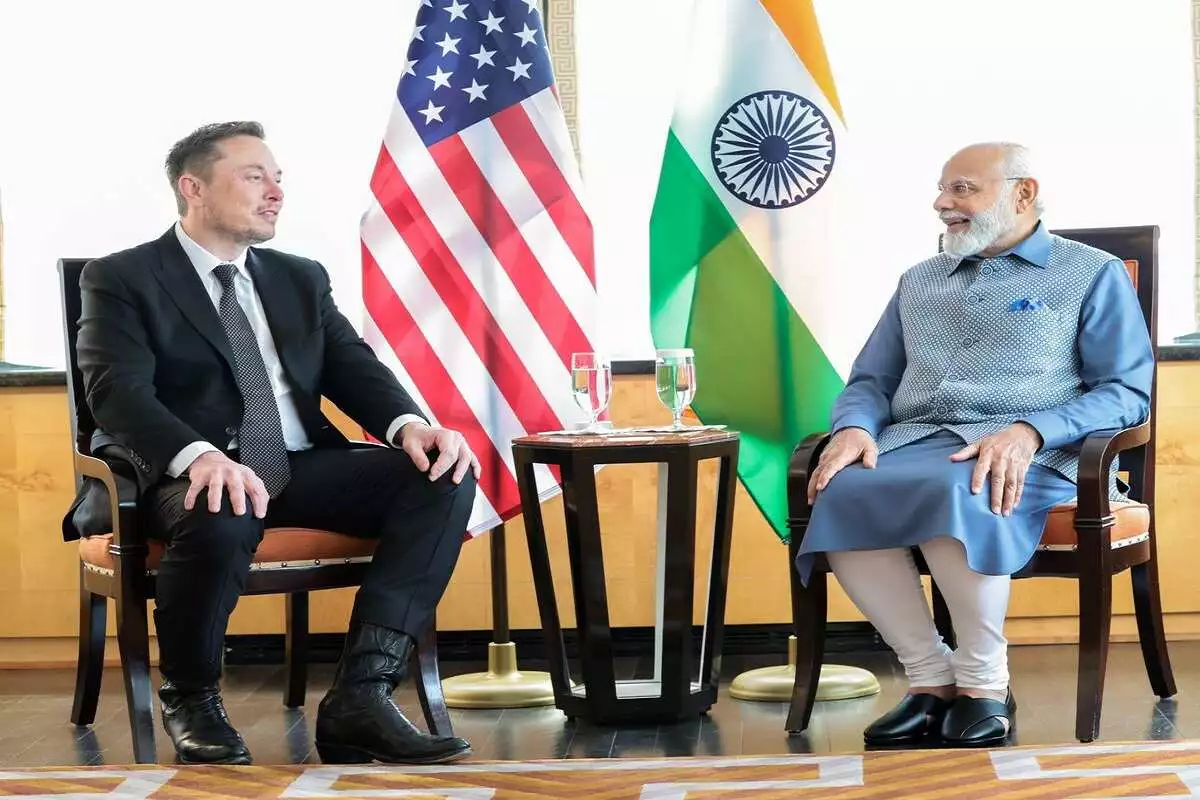
PM Modi Meets Elon Musk
The timing of Prime Minister Narendra Modi’s travel to the US couldn’t be more ideal. As he sells the country’s potential to American corporate leaders and investors, a booming economy, equity benchmarks at all-time highs, and a quickly expanding consumer market all make for wonderful advertising.
Since March, foreign capital has poured $8.7 billion into Indian stocks, which is likely to be a record for any quarter since the end of 2020. According to Bank of America, rupee-denominated bonds are on course to see the longest string of monthly buying by foreign funds in almost four years, and the local currency is providing the second-best carry returns in Asia this year.
Foreign investment in Indian stocks has reached $8.7 billion since March, which is likely a record for any quarter since the end of 2020. Rupee-denominated bonds are expected to have the longest streak of monthly purchases by foreign funds in almost four years, and the local currency is currently offering the second-best carry returns in Asia this year, according to Bank of America.
“Investors agree that India is passing through a ‘Goldilocks’ phase,” Samiran Chakraborty and Baqar Zaidi, economists at Citigroup Inc., wrote in a note this week after meeting equity and fixed-income investors in London.
The gush of foreign money and a retail-investing boom brought about by the pandemic have propelled benchmark NSE Nifty 50 Index to all-time highs, with the gauge up almost 9% this quarter.
While that’s made stocks expensive relative to history and raised the premium they typically command over emerging-market peers, the allure of steady economic and earnings growth, political stability and a supportive monetary policy is keeping investors enthused.
These attributes make the nation of 1.4 billion people stand out amid a slowing global economy, with its appeal burnished by China’s tepid post-pandemic recovery and its tensions with the West.
Investors seem willing to hold on to their ‘long’ India positions despite rich valuations, the Citi economists wrote. “There was no discerning fear of any immediate reversal of these portfolio flows.”
Strategists at UBS Global Wealth Management and Societe Generale this week upgraded their India views.
Still, there are risks on the horizon. A delayed arrival of monsoon rains, critical to inflation and growth, could derail India’s consumption recovery. Further, a sharp rebound in China – where equity valuations have become too cheap to ignore for some money managers – could hurt Indian stocks as they have been touted as one of the key beneficiaries of the rotation away from China.
Investors are locking in high yields in local-currency Indian debt as the central bank is seen on a rate pause till early next year. Foreign buying has been concentrated in the government bonds eligible for index inclusion with JPMorgan Chase & Co’s next review due later this year.
The yield on the benchmark 10-year bond has dropped about 40 basis points from a March high, helped by easing inflation and a surprise pause in the April policy by the Reserve Bank of India.
“Year-to-date, the market has absorbed supply smoothly on moderating inflation, and expectations of a peaking policy rate in India,” Standard Chartered Plc strategists including Nagaraj Kulkarni wrote in a note. “We maintain our positive outlook.”
Only the Indonesian rupiah is ahead of the Indian rupee this year. The nation’s current account deficit has dramatically decreased, boosted by falling crude oil prices and expanding services exports, which is boosting confidence in the currency.
Indian corporate dollar bonds are likewise beating their regional counterparts. The appeal of corporate financing has increased as a result of businesses’ improved financial standing and banks’ non-performing asset ratios being close to their lowest levels in a decade. While China’s high-yield debt lost 9.1% this quarter, the nation’s trash bonds gave investors 5.3%.
Post a comment“Clearly, India’s favorable growth prospects, relatively younger population, as well as increasing trend toward a China+1 strategy has helped to attract investment overall,” said Mitul Kotecha, head of emerging markets strategy at TD Securities. He sees the trend of foreign buying in bonds sustaining in the second half of the year.

















